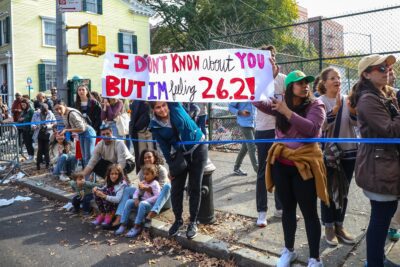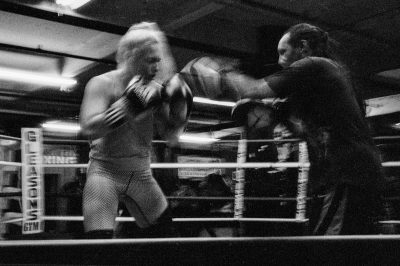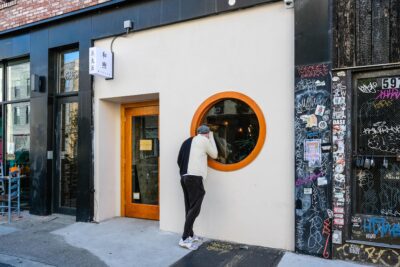Domino Sugar Factory Refinery, rendering courtesy Two Trees
Two Trees taps Photoville to explore the history of the Domino refinery
Construction has topped out on the barrel-vaulted extension for The Refinery in Williamsburg, looming over Domino Park at 292 Kent
To celebrate finally “topping out” massive renovations on the historic, 235-foot-tall Domino Sugar Refinery Building last week, real estate developer Two Trees Management partnered with Photoville to unveil an informative installation on the structure’s waterfront-facing scaffold.
Up top, the building itself (which once manufactured 90 percent of the country’s sugar) is now crowned with the foundation for a forthcoming 27,000-square-foot barrel-vaulted glass dome, and will include the refurbished iconic Domino’s sign as icing on the building’s penthouse office suites.
Down below, the seven-part photo exhibition, titled “The Refinery: Past and Future Meet,” starts in 1799, when Frederick and William Havemeyer immigrated to the United States to found Domino Sugar Foods, Inc. The exhibit concludes with the creation of Domino Park in 2018, overseen by Two Trees as part of the factory renovation on this 11-acre site, which may someday also include a beach.
Brooklyn Magazine caught up with Kate Gavriel, Culture Affairs Director at Two Trees, on the wooden steps in front of the former factory, which she notes was still in operation up until 2004. The $250 million project includes the gut renovation of the factory building, which towers over Domino Park, and involves the construction of a 27,000-square-foot steel-framed, dome-like cap.
The refinery building is the crown jewel in the occasionally contentious, wider mixed-used 11-acre “megaproject,” which will include 2,800 rental apartments across four residential buildings, 700 of which will be affordable to low-income residents, and will also include 600,000 square feet of commercial office space, 200,000 square feet of retail at the Domino site, along with event and public park space.”
“This site has been of significance to New York City’s industry,” Gavriel remarked. “I think that’s just going to transform or evolve as New York’s industry evolves.”
Eighteen years after the landmark closed operations, many neighbors still remember it as a working factory, but aren’t necessarily familiar with its history. To Gavriel, it’s remarkable that workers who may have clocked out on the factory’s final shift can return to their old haunt to find it totally transformed — and suitable for family outings. “You wouldn’t have gotten to bring your kids, or your grandkids, and be like, ‘I played a part in this’ or ‘this is a part of my history, too,’” she said.
Two Trees asked Brooklyn-based Photoville to handle everything from research to curation and production, printing the whole show on weatherproof vinyl so it can withstand the elements. It will remain on view until they finally take the fencing down for final touches.
Imagery was sourced from the Brooklyn Historical Society, the Brooklyn Public Library, and publications like NY Daily News and Brooklyn Eagle — which covered construction on the second sugar factory, which opened in July 1883 after the first one burned down.
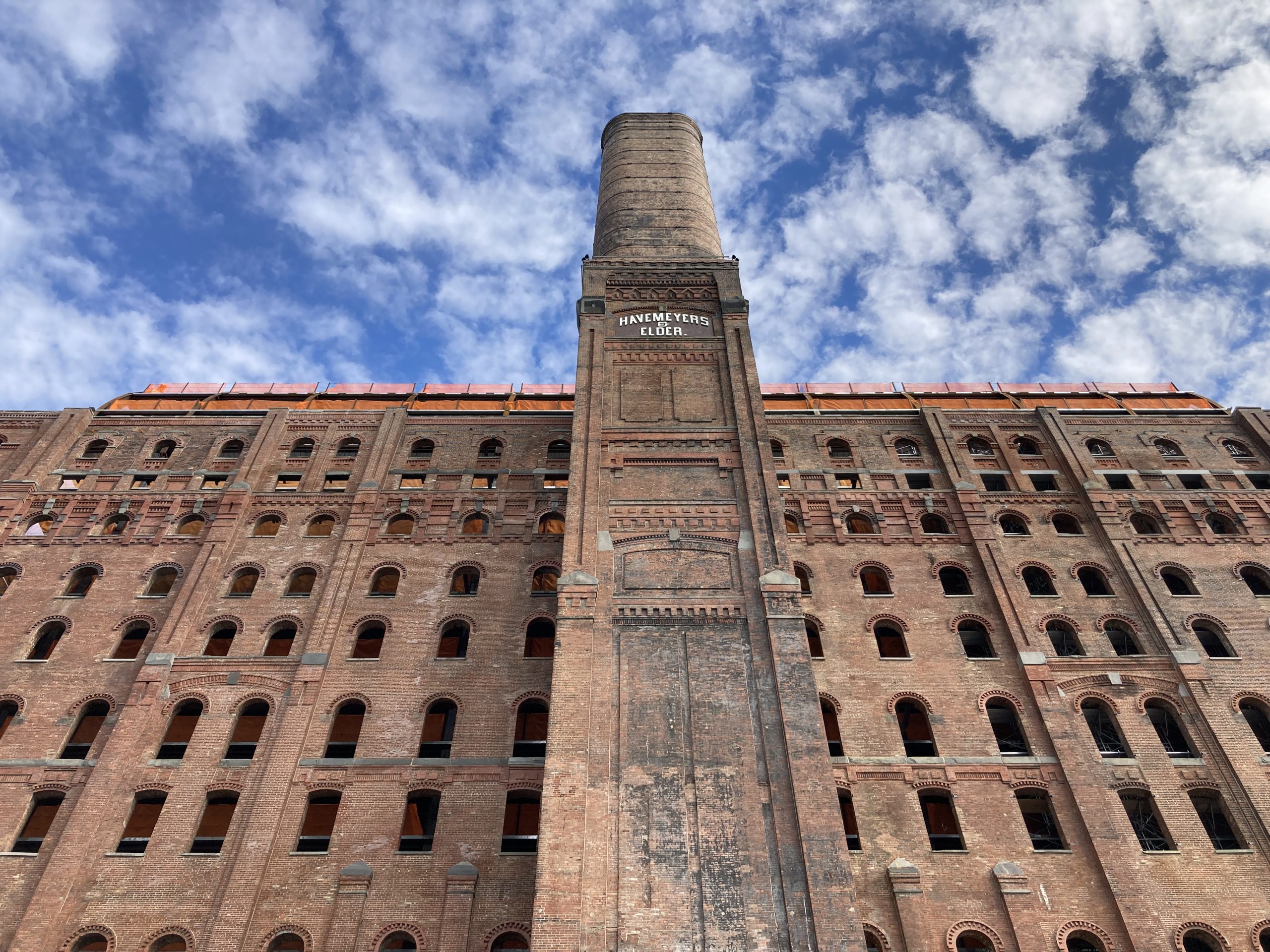
Photo by Vittoria Benzine
When Two Trees got their hands on it, the factory had been sealed since the aughts. They invited renowned New York photographers like Harlan Erskine and Giles Ashford to shoot the inside.
“For us, it was obvious how unbelievable the interior was,” Gavriel said. “I wouldn’t have any idea what the inside of a factory looks like, especially something that was built initially in 1880.” Those photos appear in the “Period of Disrepair” section, spanning a workers’ strike in 1999 through sculptor Kara Walker’s iconic 2014 show in the factory, before renovations started.
Two Trees and Photoville are both based in DUMBO — the latter has an office through the developer’s cultural subsidiary program, and Two Trees has also made donations to Photoville’s annual photography festival in Brooklyn Bridge Park, which once staged photo shows in temporary shipping containers. Since the pandemic, Photoville’s model has shifted to focus on site-specific installations on scaffolding for a socially-distanced public.
“We’ve given them space to host educational events for teachers that are doing photography workshops,” Gavriel added. “The arts community in Dumbo is pretty tight knit.”
Photoville also has a community-minded photo show up in Red Hook, another site of sugar refining from Brooklyn’s history. The Brooklyn Public Library also has an extensive online showcase of historical photos including waterfront shots, for your remote enjoyment.
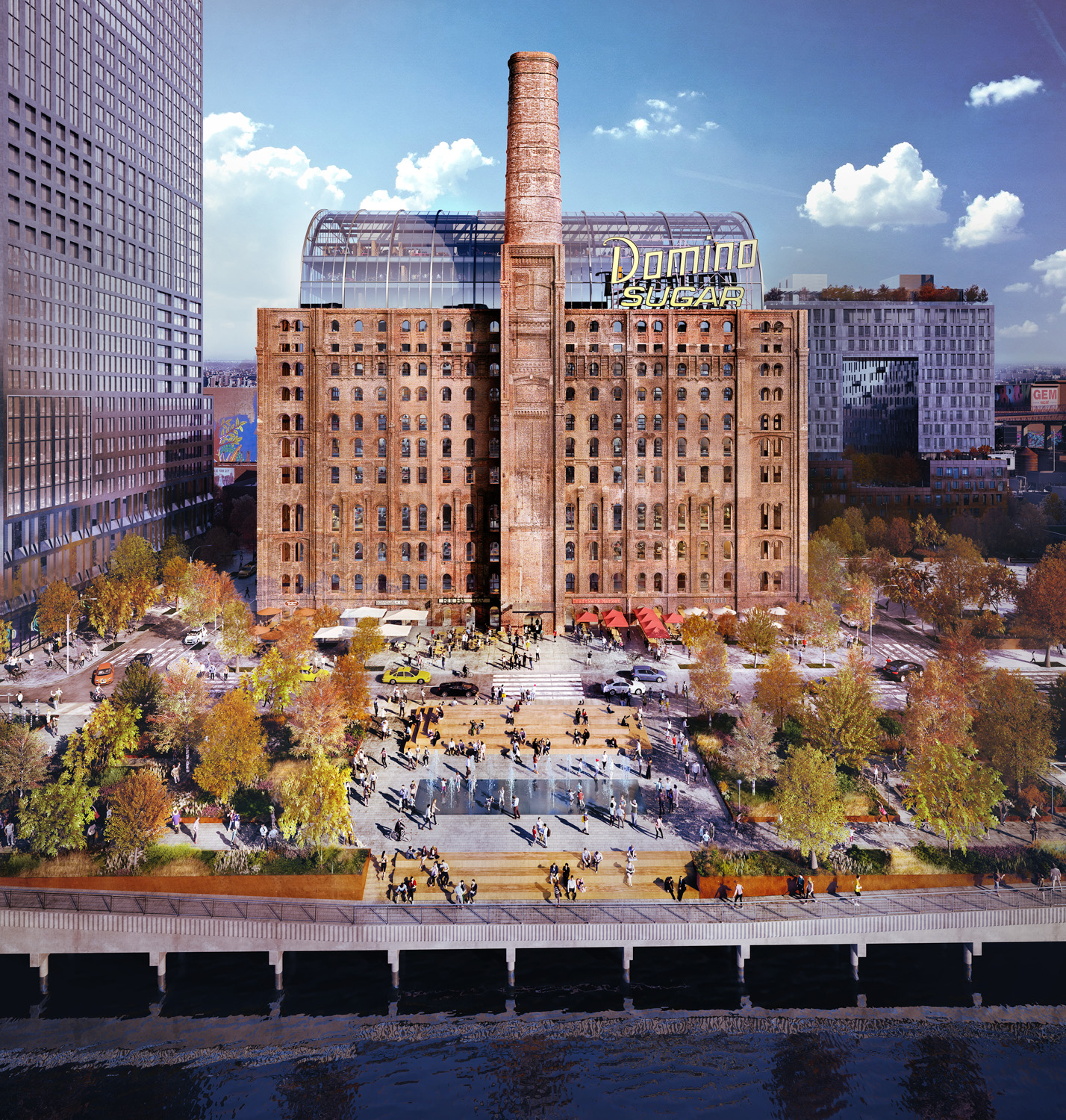

Domino Sugar Factory Refinery, rendering courtesy Two Trees
Clarification: An earlier version of this story mistakenly reported that the entire “megaproject” would include “1,050 apartments, 263 of which should be affordable and will include offices, retail, event, and public park space on its lower levels.” This article has been updated to reflect the accurate scope of the development.
You might also like 


















